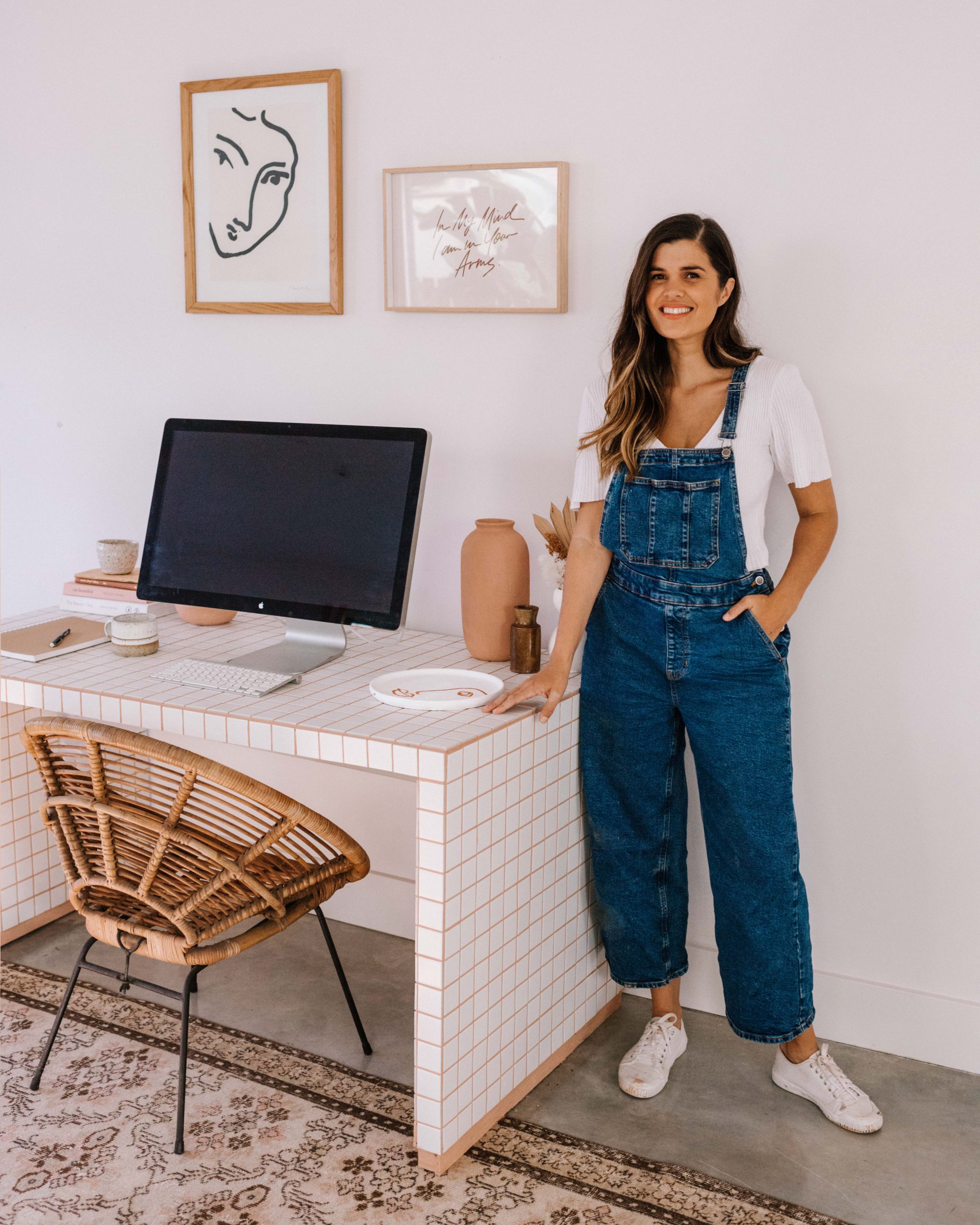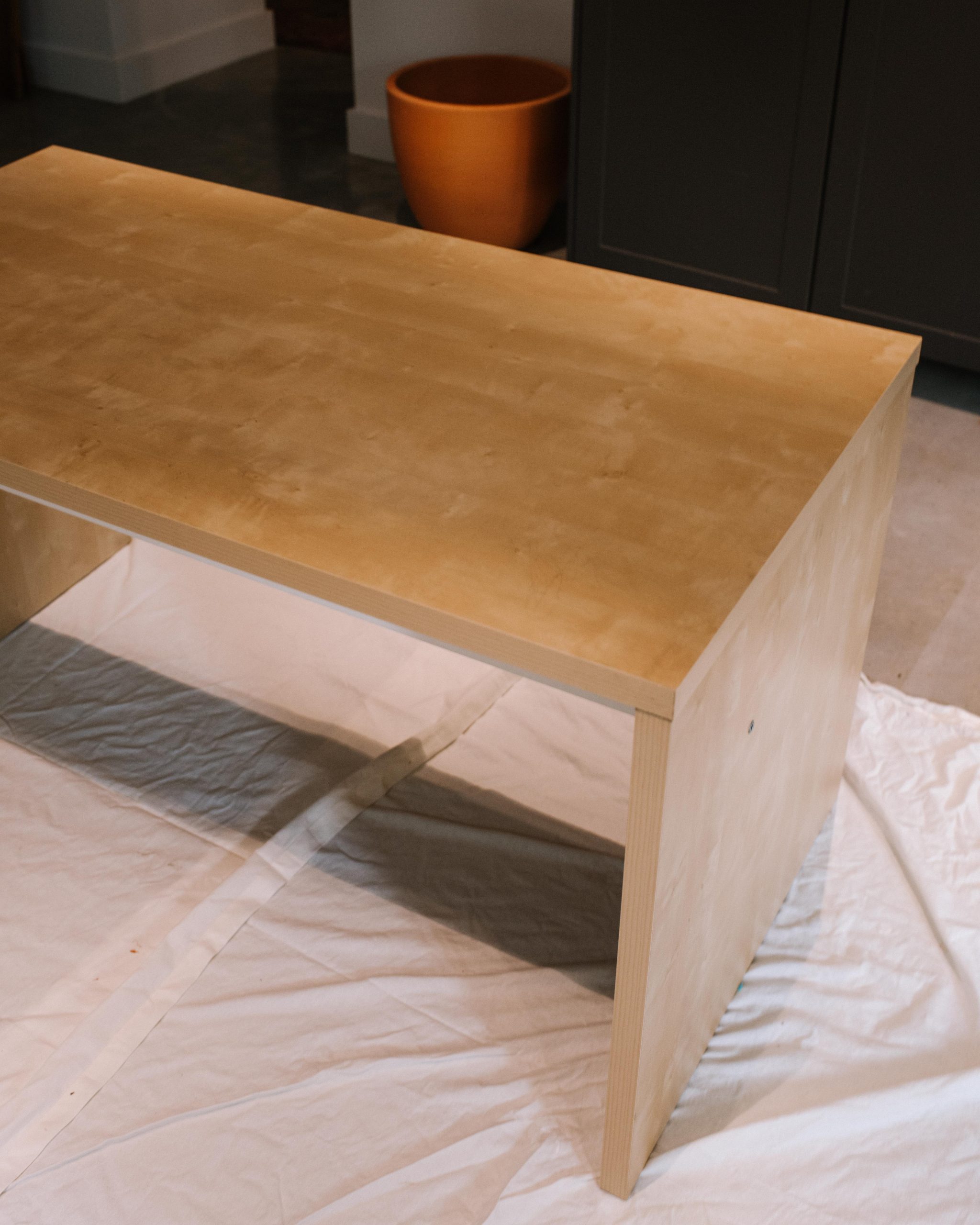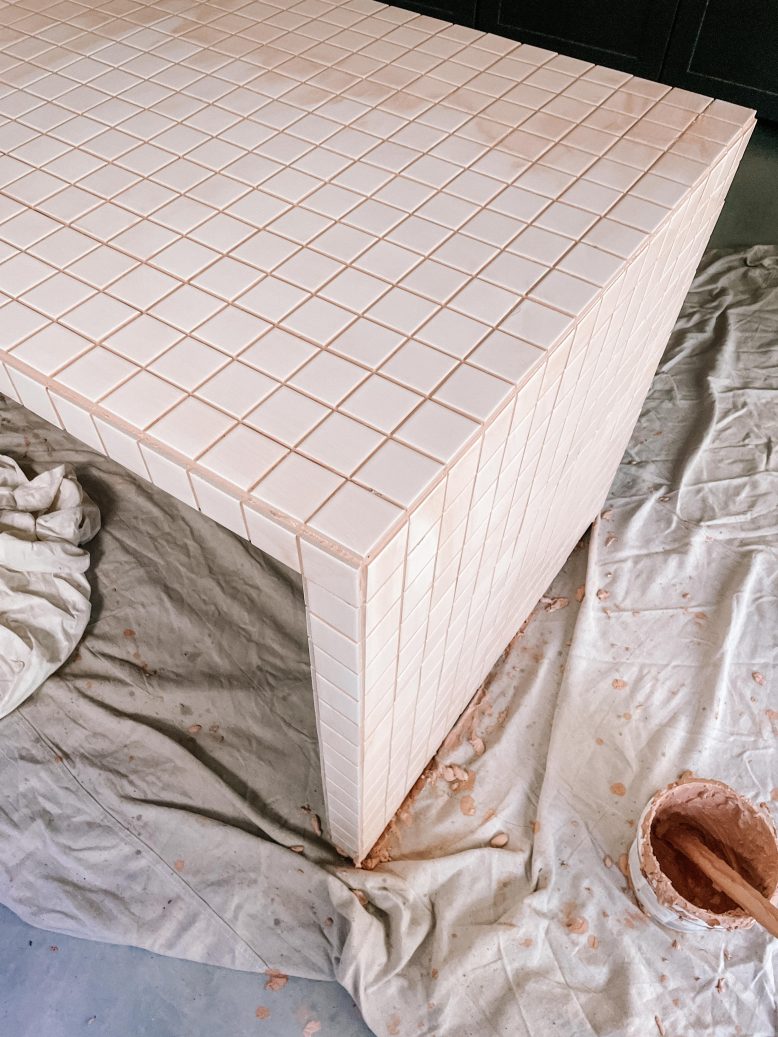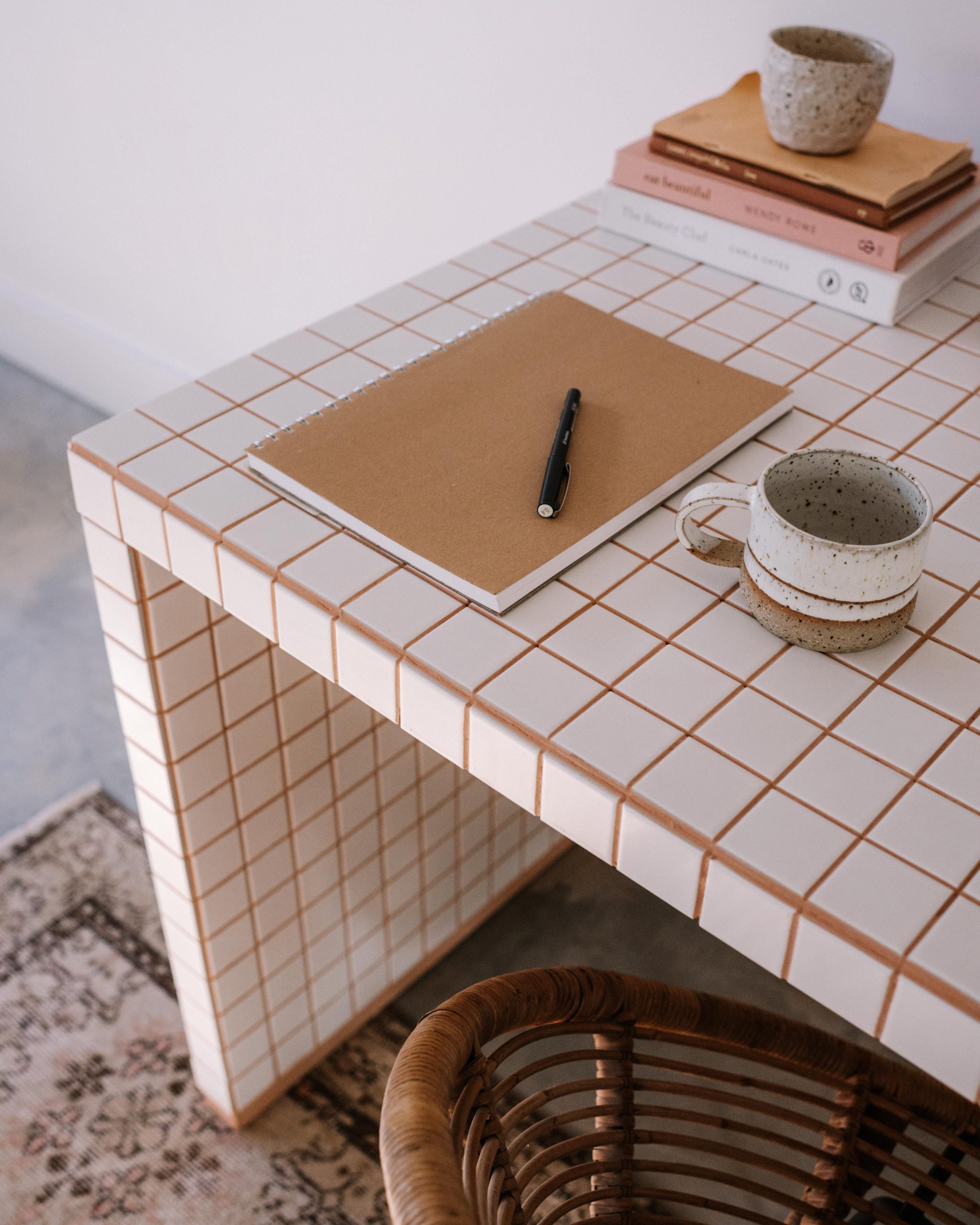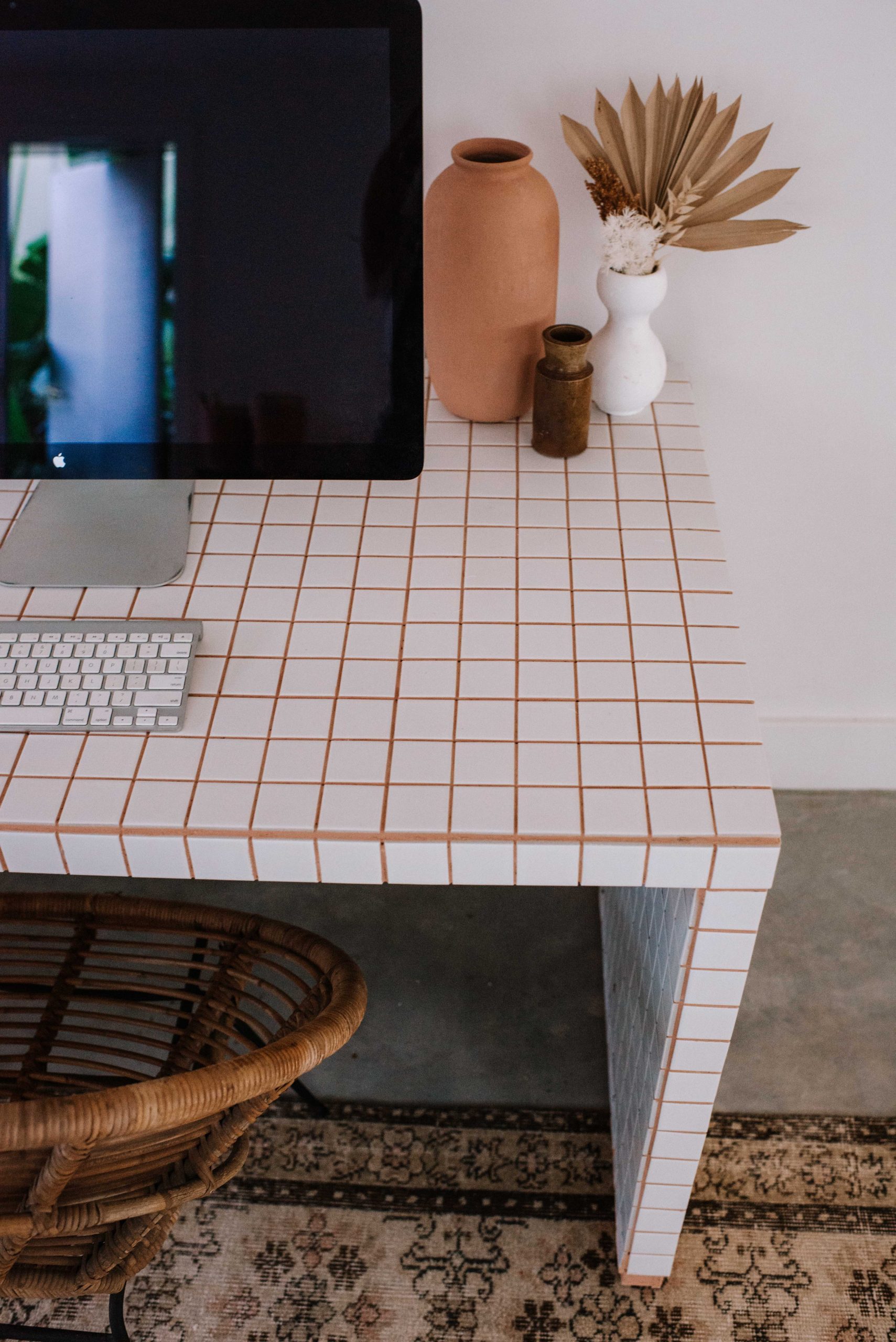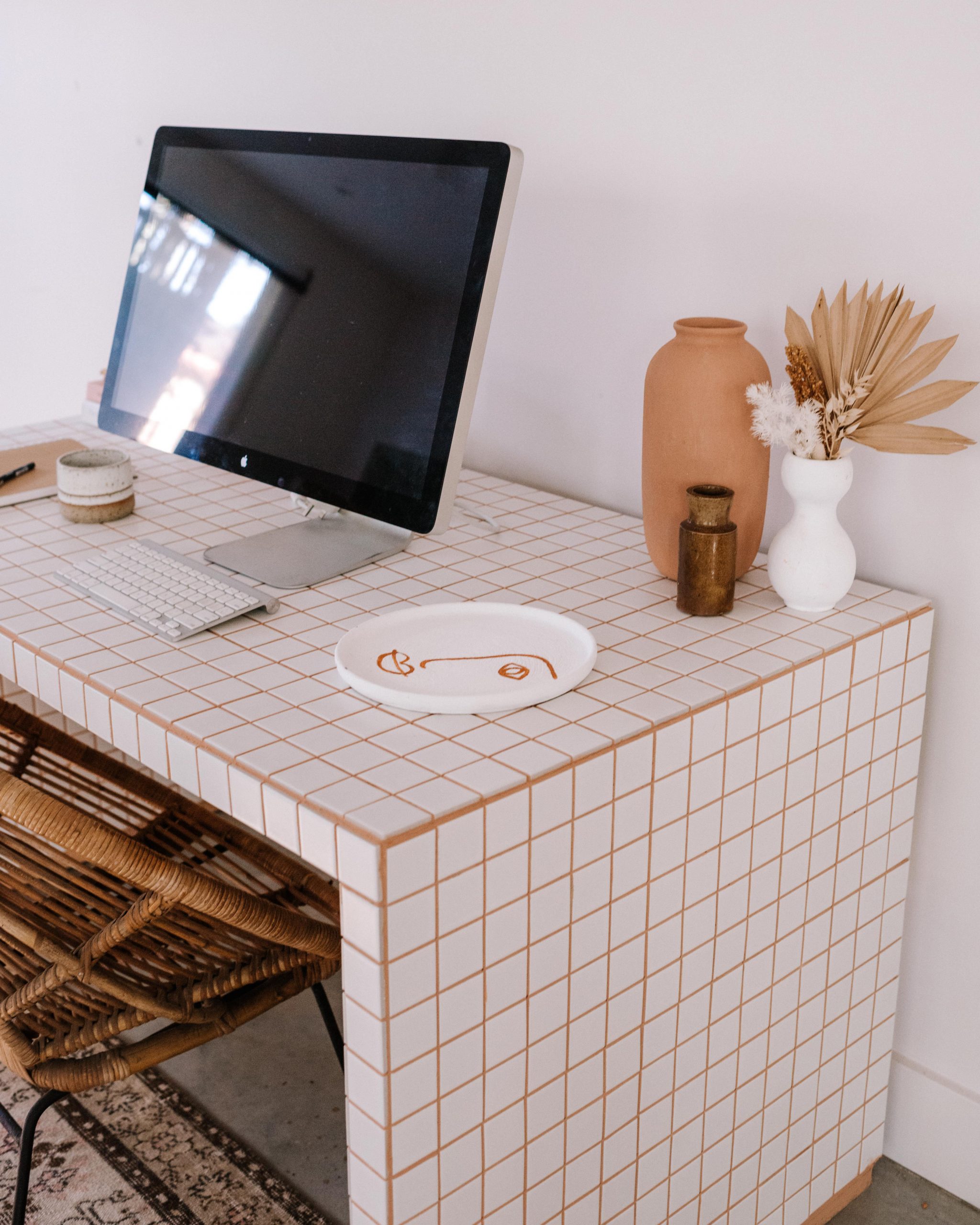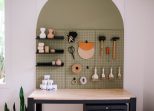An upcycled desk for my studio. Anddddd with all the tiles. How good!
I have to say, this is a project I’ve been wanting to do for so long. It seems like everywhere I have looked recently has been inspiring me to completely cover something in tiles. And I finally got the opportunity when Bunnings asked me to pick something special to work on for their annual #DIYJuly, I just knew it was this I was going to try out. Read on for how I did it. You can also read my guide on Making Your Own Coloured Grout.
- Before
- After
Choosing the desk
One thing that is important to get right is choosing the right desk to be the base for this project. I looked for a while online for the right style, and looked specifically for one that had sharp edges and simple lines which would mean a waterfall effect on the top and sides and a continuous feel to the tiles. I also needed to keep in mind the size of the tiles, but I actually bought the desk first and tweaked it a bit to make the tiles fit. You could also make the desk from scratch to the right proportions, or simply tile just the top of a desk rather than top, sides etc. Unfortunately the tiles were too wide at the bottom to fit perfectly all the way down to the ground, and I considered cutting them one by one to fit, but in the end I simply painted them the same colour as the grout.
You Need
- Decor8 Square Mosaic tiles
- Dunlop Tile Adhesive
- Davco Pre Mixed Tile Grout
- Taubmans Paint in Nutmeg
- Bunnings Sqaure Notch Adhesive Spreader
- Bunnings Tile Sponge
I also used two pieces of MDF, glue and a drill, but that was about modifying my table to make it perfect for the tiles.
How to
1
To me, the front sides of the table were very important to get right. And by that I mean that all the tile lines connected and the table looked symmetrical. I realised that down the legs was too narrow for a whole tile, as you can see the tile is significantly over the edge.
2
I decided to attach a piece of MDF to each side, which would widen the legs to the right width for a tile. I glued and then screwed this onto both sides.
3
You can see the MDF attached to the sides here. I also laid out the tiles to make sure they would fit properly without and significant overhang. By adding the MDF I also perfected the top of the table, so it fit the tiles well.
4
Next up! Gluing the tiles on. I used a square notch adhesive spreader to spread the glue on thick, then pressed the mosaic sheets down. I made sure that the gaps between the sheets mirrored the tile gaps on the sheets.
5
It was surprisingly fast to apply the tiles to the table! I did all the sides and it took about 1.5 hours. I used painters tape to keep some of the tiles on the vertical surfaces in place while they dried.
6
For the grout, I actually tinted the grout for this table myself using acrylic paint (read how to here), and it worked so well. This is a test I did, and I let it dry to make sure it dried properly with the paint added.
8
Once the grouting was complete, I cleaned the table as much as possible with the sponge to clean up all the grout. I then let it dry.
9
Once the grout was completely dry, I used a clean wet sponge to firstly fully clean any film of grout left over, then I polished it with a soft cloth. The paint and grout came off easily which was a relief. As the final step I painted the trim at the bottom the same colour as the grout.
Voila!
I loved working on this project, transforming an old desk, and it is honestly so satisfying seeing it in my studio.
To celebrate #DIYJuly and inspire your next project I have a $200 Bunnings voucher and a signed copy of my book to giveaway, all you have to do to enter is upload a DIY project you complete during July no matter the size to Instagram, include myself @genevavanderzeil and @bunnings in the caption and tag it #DIYJuly. I’ll be sharing my favourites entries throughout July, and can’t wait to pick a winner at the end of the month!






